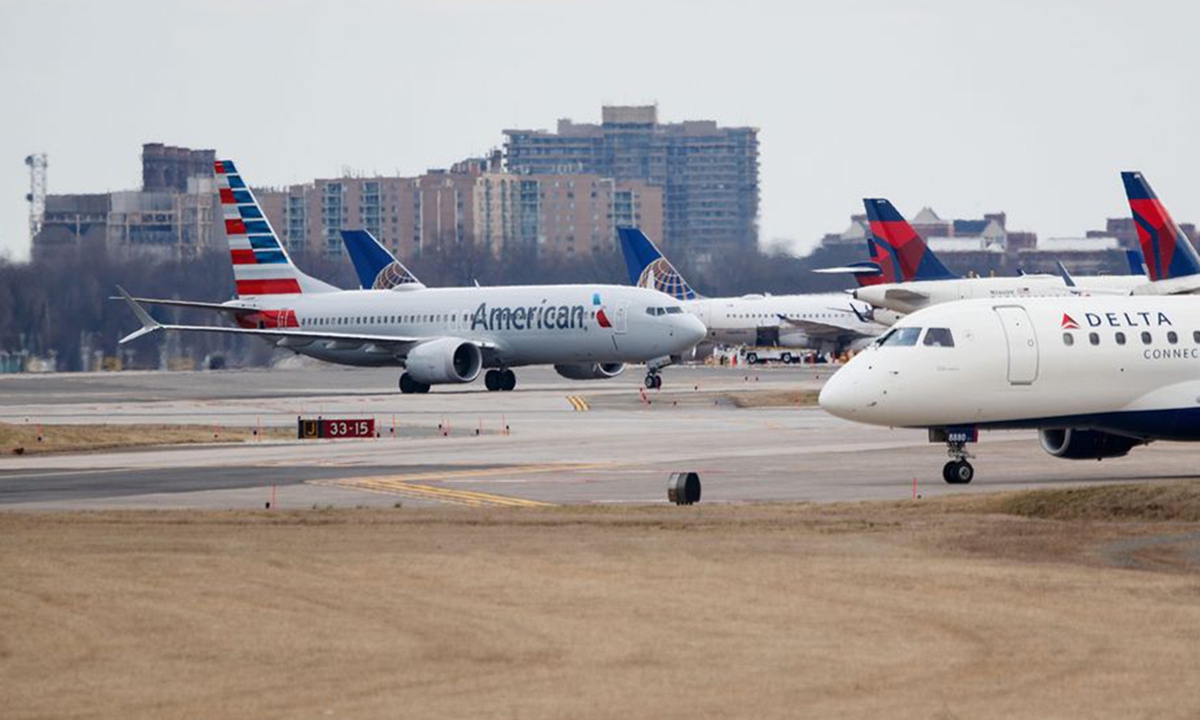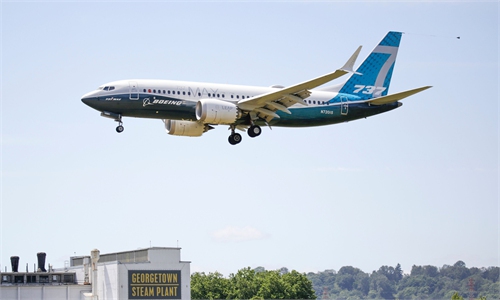
Photo: Xinhua
The US Federal Aviation Administration is set to approve Boeing's 737 MAX jets for a return to service as early as next week, Reuters reported on Monday.And while it marks a crucial step towards Boeing's recovery, it will still be challenging for the plane manufacturer to make up for its loss in market share due to the grounding of the 737 MAX and the impact of the global coronavirus.
Ever since the grounding of the 737 MAX, Boeing has been sliding toward an unprecedented crisis. After suffering more than 400 order cancellations so far this year, the aircraft manufacturer said it would cut 30,000 jobs by the end of 2021. In addition, the European Union just announced it would be imposing a 15 percent tariff on Boeing aircraft.
Given that Boeing occupies such an important position in the US manufacturing sector, the way the company tries to recover such heavy losses is of great significance to itself and the US economy as a whole. Yet the challenges it faces are daunting: even if the 737 MAX is given flight approval by aviation authorities around the world, the demand for the plane remains bearish as a result of the global aviation industry being hit so hard by the pandemic.
In fact, airlines, aircraft manufacturers, parts suppliers and other parties in the aviation industrial chain are all in great difficulty these days. However, from a transformational perspective, the unprecedented crisis may have given the industry the boost it needed. For instance, aerospace company Thales indicated at a recent industrial summit in Shanghai that the industry needs to grow to be greener and more digitized than before, pointing the way to a more eco-friendly industry with higher requirements for technological upgrading.
While it is understandable that Boeing might still be pinning its hopes on the bestselling 737 MAX, it may in fact be more pressing to look at how they can keep up with the industrial upgrading trend and restore market confidence through employing more sophisticated technology.
And while the problems facing the aviation industry do not necessarily apply to all US manufacturing sectors, to a certain extent Boeing's predicament mirrors the broader issues facing US manufacturing.
How to revive US manufacturing has become one of the key issues facing US presidents over the years. Former US president Barrack Obama's push for re-industrialization and manufacturing indicated that the US is in no position to bring back low-end manufacturing, so it has to push forward with the transformation and upgrading of high-end manufacturing.
US President Donald Trump put more emphasis on the return of manufacturing jobs, trying to use administrative means to achieve such a goal - but such efforts haven't paid off during his time in office.
In the post-epidemic era, Joe Biden is likely to face even more difficulty in this area, and it remains to be seen whether he will be able to lead US manufacturing down a much-needed path of transformation and upgrading.



